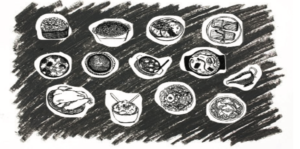
It’s an interesting time to be studying journalism, to say the least. Following years of technological and societal trends that have challenged and transformed the American media landscape, we now find ourselves at a critical juncture.
President Trump wasted no time in making it clear that a free press is not welcome in the version of America he imagines, following his inauguration. The very next day, Press Secretary Sean Spicer went on record lying about the size of crowds in attendance, directly attacking the concept of objective truth. Counselor to the President Kellyanne Conway quickly solidified the administration’s position with her now infamous introduction of the term “alternative facts” on that Sunday’s Meet the Press. Perhaps more sinister though, is the fact that six journalists are currently facing felony rioting charges following their coverage of the inauguration.
Trump’s ideological battle against the press has sent shivers down the spines of journalists everywhere, but it comes as no surprise. What has been unexpected is the fact that the public, who have previously played the role of distracted, uninterested parents who consistently overlook journalists’ cry for attention to weighty issues, are starting to understand the importance of a free press now that it’s under siege.
There’s a lot of work to do in rekindling trust between the public and the media. In the current political climate, it appears that journalists, scientists and other “truth-trackers” are tasked with an impossible undertaking: restoring the concept of objective truth in a society that seems to be dismantling it.
As journalists, our job hasn’t changed: It consists of seeking out the truth and disseminating it to the public. But we need to learn from the media’s past mistakes. That means recognizing and responding to the public’s genuine needs, being fearless in calling out falsehoods and doing the hard work of stringent reporting rather than giving a platform to those with no respect for the truth. Providing context and asking appropriate questions, despite being fundamentals of good reporting, need to be emphasized more than ever.
However, good reporting is meaningless if nobody pays attention. Now that the need for journalism has become explicitly clear, the public needs to do their part in keeping us from solidifying our fate as a “post-truth” society. That means doing their own hard work: researching stories rather than skimming headlines, seeking out credible journalists and activists, and actively questioning sources at all times.
Despite grim circumstances, quality journalism never fell by the wayside, and ethical journalists are working harder now than ever to inform the public. With the public’s rejection of big-name, mainstream media outlets, good journalism has been popping up in some surprising places, such as Teen Vogue. Hard-hitting investigative journalism, having been invigorated by technological advancements in recent years, is proving to be more crucial than ever.
While the circumstances are certainly unsavory, it’s exciting to see the field buzzing with energy, and it’s exciting that the value of a free press is being realized and appreciated by journalists and everyday citizens alike. However, this is only the beginning of a long, treacherous battle against Trump’s administration’s attempts to obliterate the public’s sense of what’s true or false, or right or wrong.


